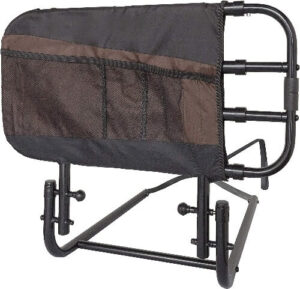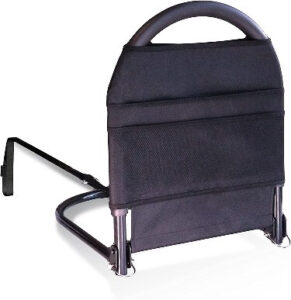There is some risk involved with using bed rails. The biggest issue is entrapment, which means a body part gets stuck between the bed rail and the mattress. This accident can become deadly when someone’s head or neck gets trapped since they can suffocate or injure themselves trying to get free.
Over a ten-year period in the early 2000s, the US Consumer Product Safety Commission documented 143 deaths related to bed rail entrapment.2 The majority of the people who died from rail entrapment were at least 60 years old, and many experienced a physical limitation or suffered from Alzheimer’s, dementia, or “other mental limitation.” These factors could make it difficult for someone to understand how they got stuck or how to free themselves physically.
The FDA recommends bed rails with a gap of no more than 4.75 inches between bars, but it isn't mandatory. Confirm this measurement before buying a bed rail.3
Some people may also panic and climb over the bed rail if they get confused about how to safely get out of bed or how to call for assistance. They may fall and injure themselves in the process. Another scary scenario happens when someone rolls out of bed and slides to the ground and gets their neck trapped between the bed rail and the mattress.








